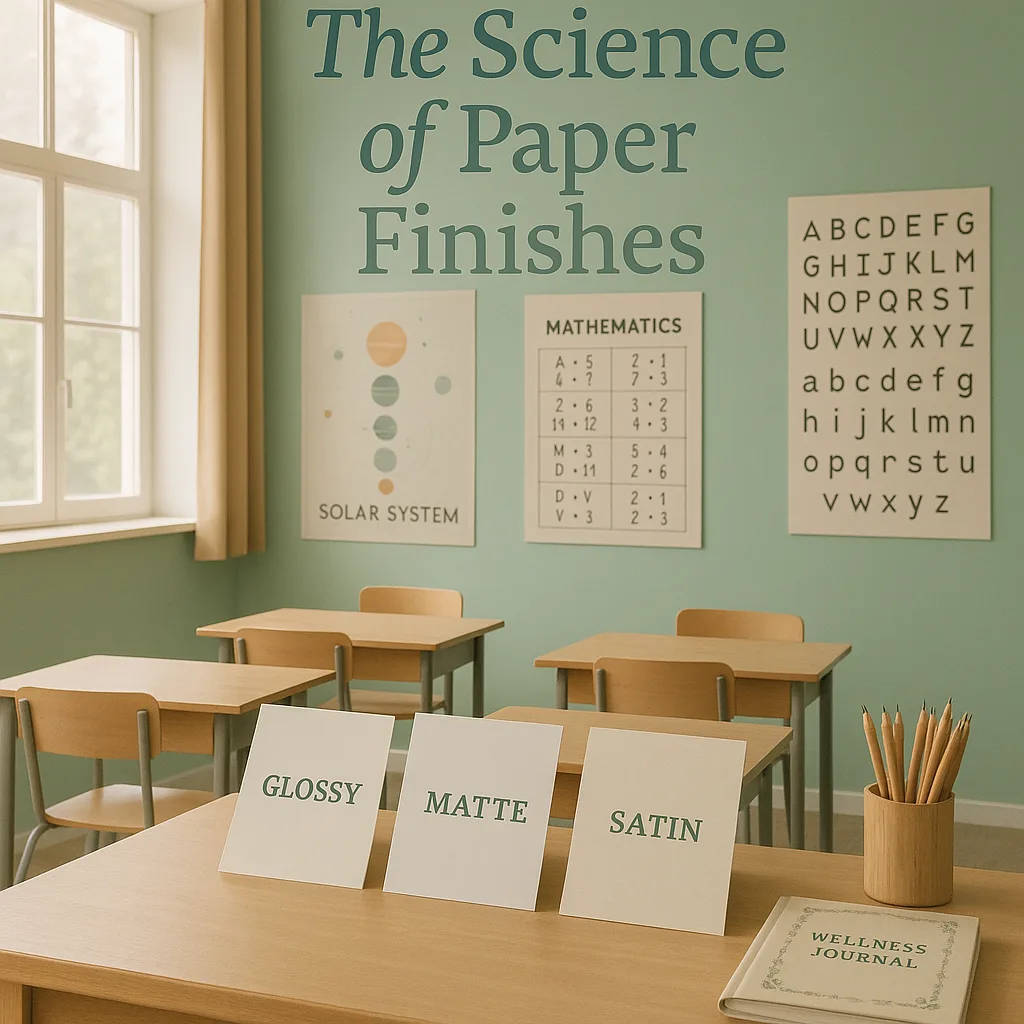Paper Finishes Affect Student Focus – Research Guide
Have you ever noticed how some classroom posters seem to draw students in while others get barely a glance? The secret might lie in something as simple as the paper finish. As educators, we carefully select content for our visual displays, but the science behind poster maker machines paper finish choices reveals an equally crucial factor in student engagement and learning retention.

The Neuroscience Behind Visual Processing in Classrooms
Recent research from educational psychology journals reveals fascinating insights into how our brains process different visual surfaces. When students look at educational materials, their visual cortex doesn’t just decode content—it also responds to surface properties like reflectivity, texture, and contrast. These seemingly minor details can significantly impact cognitive load and information processing.
A 2023 study published in the Journal of Learning and Instruction found that surface finish affects visual fatigue rates by up to 40% in typical classroom lighting conditions. This research underscores why thoughtful selection of paper finishes through quality poster maker machines can make a measurable difference in student wellness and academic performance.
Glossy Finishes: When Vibrancy Matters Most
Glossy paper finishes create stunning visual impact through their high reflectivity and color saturation. Research indicates that glossy surfaces can enhance color perception by up to 30%, making them ideal for certain educational applications. However, this same reflectivity presents challenges in typical classroom environments.
The high-gloss surface works exceptionally well in:
Glare Impact
45% of students report difficulty reading glossy posters under fluorescent lightsResearch Findings
A Stanford University study found that prolonged exposure to reflective surfaces in learning environments can increase visual fatigue by 35% compared to matte alternatives.Matte Finishes: The Gentle Learning Surface
Matte paper finishes have emerged as the wellness-conscious choice for extended viewing materials. Their non-reflective surface reduces glare by up to 90%, creating a more comfortable visual experience that supports sustained attention and reduces eye strain. This makes them particularly valuable for materials that students reference throughout the day.
Educational psychologists recommend matte finishes for:
Lighting Conditions: The Critical Variable
Understanding how different paper finishes interact with various lighting conditions is essential for optimizing student focus and retention. Natural light, fluorescent fixtures, and LED panels each create unique challenges and opportunities for visual display effectiveness.
Research from the Illuminating Engineering Society demonstrates that ambient light levels between 300-500 lux provide optimal conditions for reading printed materials. However, the interaction between light source and paper finish can dramatically alter perceived brightness and comfort levels.
Practical Application: Zoning Your Classroom with Poster Maker Machines Paper Finish
Creating distinct visual zones using appropriate paper finishes can significantly enhance the learning environment. By strategically selecting finishes based on zone function and lighting conditions, educators can optimize both aesthetic appeal and educational effectiveness.
Reading and Quiet Zones: Utilize matte finishes exclusively to create a calming environment that supports extended focus. Position these materials away from direct light sources to maintain consistent visibility throughout the day.
Collaborative Spaces: Satin finishes work beautifully here, offering enough visual interest to engage groups while maintaining readability from various angles. The Campus Pro 36 Poster Maker Advanced Package provides the perfect balance of quality and versatility for creating these materials.
The Investment in Student Success
When schools invest in quality poster maker machines with diverse paper finish options, they’re investing in student wellness and academic success. The ability to match paper finish to educational purpose and environmental conditions represents a powerful tool for creating optimal learning environments.
The Classroom Pro 24 Poster Maker Elite Package offers educators the flexibility to experiment with different finishes, including both coated and glossy photo paper options. This variety allows teachers to create customized visual environments that support diverse learning needs and reduce visual fatigue throughout the school day.
Moving Forward: Your Action Steps
Armed with this research-backed understanding of paper finishes and their impact on student focus and retention, you’re ready to optimize your classroom’s visual environment. Start by auditing your current displays, noting which materials students engage with most effectively and which seem to cause visual discomfort.
Remember, creating an optimal visual learning environment is an ongoing process. Each adjustment you make based on paper finish science contributes to a more supportive, engaging classroom where every student can thrive. Your commitment to understanding these details reflects the deep care you have for your students’ wellness and success.
Ready to transform your classroom with science-backed visual displays?
Explore our complete range of poster maker machines and discover how the right tools can enhance both teacher wellness and student success.

